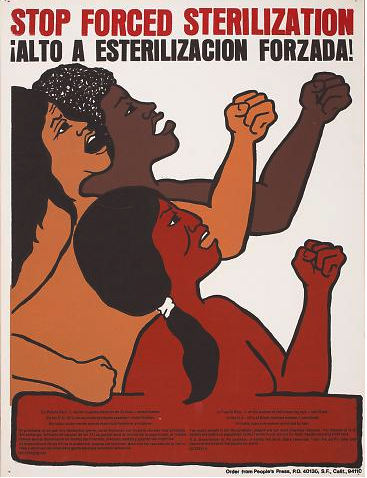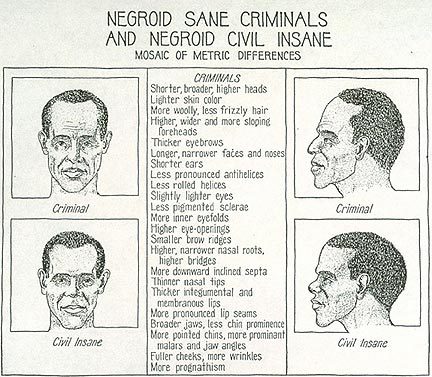sehacepuentes:#womenshistorytriguenaista:thisiswhitehistory:Day 19 of White History Month: Medical R
sehacepuentes:#womenshistorytriguenaista:thisiswhitehistory:Day 19 of White History Month: Medical RacismThe United States (along with other countries in the Western world) has a history of medical racism. The general population is unaware of the history of medical racism, and white health professionals are as well. John M. Hoberman of UT-Austin says that medical schools do not teach students about the history of medical racism, nor do they give them proper diversity training. Many Americans of color have grown to distrust medical professionals, and many white Americans attribute this to paranoia rather than their knowledge of historical and contemporary medical mistreatment.Medical racism has often benefitted white Americans disproportionately while simultaneously harming Americans of color, as well as people of color outside of the United States. White Americans benefit from medical advances, while individual people of color were harmed, and in some cases, large groups of people of color have been harmed. From trying to “better” the race, to making scientific advances, white people have used and disregarded the rights people of color for their own benefit. Medical racism shows the lack of value ascribed to the bodies and lives of people of color.EugenicsThe eugenics movement in the United States became very popular and manifested itself in many different ways. Anti-miscegenation laws, birth control, sterilization, forced abortions, forced pregnancies (of white women), and the promotion of higher birth rates for neurotypical white women. Eugenics policies were first instituted in the United States. Laws that advocated the sterilization of those with mental illnesses were in effect in the early 1900s, and soon spread to other countries. Eugenics movements advocated for the eradication of those with mental illness, those who were homosexual, “promiscuous”, and most of all, those who were outside of the “Nordic” or “Aryan” race. Eugenics was advocated for by many famous white Westerners, including world leaders such as Winston Churchill, Theodore Roosevelt, and Calvin Coolidge.While eugenics was highly unpopular after the Holocaust, the eugenics tradition of the United States actually provided the background for Nazi Medicine. While most people are aware to some extent what the horrors of Nazi medicine entailed, few people are aware of the American eugenics tradition that inspired it. Eugenics societies promoted “fit families” and “better babies” through awards at contests, but they also promoted harmful legislation barring immigrants and sterilizing “undesirable” people.Controlling Reproductive Rights of Women of ColorBlack WomenDue to the eugenics movement, thousands of Black women were sterilized. In North Carolina, 7600 people were sterilized between 1929 and 1974, 85% of them women and girls, and a disproportionate number of them people of color (39% in the 1940s, 60% in the 1960s while making up only 25% of the population). The program that allowed for their sterilization was not eliminated fully until 2003. Black women were also sterilized without their consent in other states.Puerto Rican WomenThe United States has held Puerto Rico as a territory since 1898. As a solution to Puerto Rican economic problems, the US government felt that reducing the population of the Puerto Rican government would help. The US sterilized over one-third of Puerto Rican women, many uneducated and working class, between the 1930s and 1970s. Most of these women did not understand the procedure and did not know that it would render them sterile.Additionally, the US used Puerto Rican women to test out birth control pills in the 1950s. These women were not informed that the pills were experimental - only that they would prevent pregnancy. They were not informed of the possible side effects ranging from nausea to possible death - three women died during the birth control pill trials. Women who reported side effects had their concerns dismissed by researchers.Native American WomenNative American women who used the Indian Health Services were subject to numerous violations of their rights, particularly their reproductive rights. Some women who underwent procedures such as appendectomies would also have hysterectomies performed on them without their consent. At least 25 percent (and as high as 50 percent) of Native American women of reproductive age who used Indian Health Services were sterilized without their consent or after coercion. Largely white male doctors would use Native American women as “practice” for performing gynecological procedures on white women. Tuskegee Experiment and Guatemala STD ExperimentIn 1932, the Tuskegee Institute worked with the United States government to perform a study on a group of Black men with syphillis. The men were recruited to the study with promises of free meals, transportation to the clinic, medical exams and even treatment for minor medical concerns. The study lasted 40 years and involved the participation of over 600 Black men. This sounded like a good arrangement in theory, but researchers did not hold up their end of the bargain. By 1947, penicillin was widely used as treatment for syphillis. The researchers neglected to inform the men involved in the study in addition to refusing to treat the men.As a result of the Tuskegee Experiment, nearly a hundred men died, and hundreds of partners and children were infected with the disease as well. Not only was this a breach of research ethics, as the participants did not give informed consent and were not treated for their ailment. The men and their families won a $9 million class action lawsuit in 1973, but this of course was not enough to make up for the damage that was done.Similarly, the same researcher who uncovered the Tuskegee Syphillis experiment, Susan Reverby, discovered that a similar situation occured in Guatemala. The US Public Health Service and Pan American Sanitary Bureau worked with the Guatemalan government to do research on 1300 Guatemalans that involved intentionally exposing them to STDs.The experiment involved many who are considered disposable in society - sex workers, mental patients, prisoners, and soldiers. Only 700 of these people were treated, and during the study 83 people died. Some of the most disturbing incidents during the study involved injecting epilepsy patients in the back of the head with syphillis, as well as the infection of a terminal illness patient with gonnorhea (she died six months later). The Guatemalans in the study also did not give informed consent.Henrietta LacksHenrietta Lacks (1920 - 1951) was a Black woman who went to Johns Hopkins Hospital to be examined for serious medical concerns. After a biopsy was performed, she was diagnosed with and subsequently treated for cancer. While she was being treated, healthy and cancerous cells were removed from her cervix without her consent. She died in 1951, but the cells stolen from her body continued to be used. Though she died poor and was buried without a gravestone, her cells were used for many medical tests. From routine tests for human sensitivity to substances to the development of the Polio vaccine, her cells were used for medical advances. Her family only learned about the removal of her cells in the 1970s, and she is largely unknown despite the contributions to science she had made.Current medical racismDistrust of medical health professionals, along with racist attitudes probably contribute to medical health disparities. Racially linked anxiety disorders have been linked to racism at the hands of white people. A significant number of Black women report racism and sexism contributing to their stress and to stress-linked overeating.Stressful life circumstances are reasons for hypertension and many mental health ailments. Working and middle class Black women who report multiple forms of discrimination are more likely to have high blood pressure than those who report fewer incidents. Black Americans who are more confrontational about racism are less likely to have elevated blood pressure than those who stay silent, which can be attributed to the effects of suppressed hostility. Today, doctors still exhibit subconscious racist attitudes. A study in the American Journal of Public Health (March 2012) showed that a full two-thirds of the doctors in the sample were racially biased. White and Asian health professionals showed anti-Black bias, but Black health professionals showed no bias. Doctors are more likely to speak more slowly to Black patients, extend their visits, and to lecture and talk down to them. This shows that the doctors are paternalistic and don’t care about respecting their patients or asking for their inputAdditionally, white doctors are prone to giving worse care to patients of color, regardless of their income. People of color are less likely to get the diagnoses and treatment that they need, for everything ranging from heart disease medication, HIV treatment, and dialysis. Black women are the least likely to receive the pain medication that they need. Mental health professionals are less likely to diagnose people of color with an appropriate diagnosis because of their race.Someone remembered PR, I am so fucking happy.In addition to the info above- The way the US gov’t would go about sterilizing women was that they would go visit women’s houses in the campo to schedule a “check up” (because the US gov’t so cared about our women’s health)- but when they turned up, it was a surprise sterilization procedure. I’m pretty sure this technique of luring women to sterilize them was also used in the US on Indigenous women in various reservations. -- source link
Tumblr Blog : thisiswhitehistory-blog.tumblr.com


